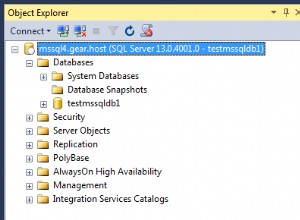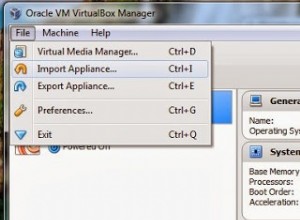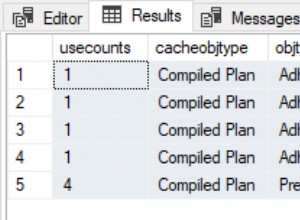Tôi đã phải giải quyết vấn đề này để tiêu hóa một số dữ liệu lập lịch trình. Điều này cho phép nhiều thời gian trực tuyến, nhưng giả định rằng chúng không trùng lặp.
select convert(datetime,'1/1/2015 5:00 AM') StartDateTime, convert(datetime,'1/1/2015 5:00 PM') EndDateTime, convert(varchar(20),'Online') IntervalType into #CapacityIntervals
insert into #CapacityIntervals select '1/1/2015 4:00 AM' StartDateTime, '1/1/2015 6:00 AM' EndDateTime, 'Offline' IntervalType
insert into #CapacityIntervals select '1/1/2015 5:00 AM' StartDateTime, '1/1/2015 6:00 AM' EndDateTime, 'Offline' IntervalType
insert into #CapacityIntervals select '1/1/2015 10:00 AM' StartDateTime, '1/1/2015 12:00 PM' EndDateTime, 'Offline' IntervalType
insert into #CapacityIntervals select '1/1/2015 11:00 AM' StartDateTime, '1/1/2015 1:00 PM' EndDateTime, 'Offline' IntervalType
insert into #CapacityIntervals select '1/1/2015 4:00 PM' StartDateTime, '1/1/2015 6:00 PM' EndDateTime, 'Offline' IntervalType
insert into #CapacityIntervals select '1/1/2015 1:30 PM' StartDateTime, '1/1/2015 2:00 PM' EndDateTime, 'Offline' IntervalType
--Populate your Offline table
select
ROW_NUMBER() over (Order by StartDateTime, EndDateTime) Rownum,
StartDateTime,
EndDateTime
into #Offline
from #CapacityIntervals
where IntervalType in ('Offline','Cleanout')
group by StartDateTime, EndDateTime
--Populate your Online table
select
ROW_NUMBER() over (Order by StartDateTime, EndDateTime) Rownum,
StartDateTime,
EndDateTime
into #Online
from #CapacityIntervals
where IntervalType not in ('Offline','Cleanout')
--If you have overlapping online intervals... check for those here and consolidate.
-------------------------------
--find overlaping offline times
-------------------------------
declare @Finished as tinyint
set @Finished = 0
while @Finished = 0
Begin
update #Offline
set #Offline.EndDateTime = OverlapEndDates.EndDateTime
from #Offline
join
(
select #Offline.Rownum,
MAX(Overlap.EndDateTime) EndDateTime
from #Offline
join #Offline Overlap
on Overlap.StartDateTime between #Offline.StartDateTime and #Offline.EndDateTime
and #Offline.Rownum <= Overlap.Rownum
group by #Offline.Rownum
) OverlapEndDates
on #Offline.Rownum = OverlapEndDates.Rownum
--Remove Online times completely inside of online times
delete #Offline
from #Offline
join #Offline Overlap
on #Offline.StartDateTime between Overlap.StartDateTime and Overlap.EndDateTime
and #Offline.EndDateTime between Overlap.StartDateTime and Overlap.EndDateTime
and #Offline.Rownum > Overlap.Rownum
--LOOK IF THERE ARE ANY MORE CHAINS LEFT
IF NOT EXISTS(
select #Offline.Rownum,
MAX(Overlap.EndDateTime) EndDateTime
from #Offline
join #Offline Overlap
on Overlap.StartDateTime between #Offline.StartDateTime and #Offline.EndDateTime
and #Offline.Rownum < Overlap.Rownum
group by #Offline.Rownum
)
SET @Finished = 1
END
-------------------------------
--Modify Online times with offline ranges
-------------------------------
--delete any Online times completely inside offline range
delete #Online
from #Online
join #Offline
on #Online.StartDateTime between #Offline.StartDateTime and #Offline.EndDateTime
and #Online.EndDateTime between #Offline.StartDateTime and #Offline.EndDateTime
--Find Online Times with offline range at the beginning
update #Online
set #Online.StartDateTime = #Offline.EndDateTime
from #Online
join #Offline
on #Online.StartDateTime between #Offline.StartDateTime and #Offline.EndDateTime
and #Online.EndDateTime >= #Offline.EndDateTime
--Find Online Times with offline range at the end
update #Online
set #Online.EndDateTime = #Offline.StartDateTime
from #Online
join #Offline
on #Online.StartDateTime <= #Offline.StartDateTime
and #Online.EndDateTime between #Offline.StartDateTime and #Offline.EndDateTime
--Find Online Times with offline range punched in the middle
select #Online.Rownum,
#Offline.Rownum OfflineRow,
#Offline.StartDateTime,
#Offline.EndDateTime,
ROW_NUMBER() over (Partition by #Online.Rownum order by #Offline.Rownum Desc) OfflineHoleNumber
into #OfflineHoles
from #Online
join #Offline
on #Offline.StartDateTime between #Online.StartDateTime and #Online.EndDateTime
and #Offline.EndDateTime between #Online.StartDateTime and #Online.EndDateTime
declare @HoleNumber as integer
select @HoleNumber = isnull(MAX(OfflineHoleNumber),0) from #OfflineHoles
--Punch the holes out of the online times
While @HoleNumber > 0
Begin
insert into #Online
select
-1 Rownum,
#OfflineHoles.EndDateTime StartDateTime,
#Online.EndDateTime EndDateTime
from #Online
join #OfflineHoles
on #Online.Rownum = #OfflineHoles.Rownum
where OfflineHoleNumber = @HoleNumber
update #Online
set #Online.EndDateTime = #OfflineHoles.StartDateTime
from #Online
join #OfflineHoles
on #Online.Rownum = #OfflineHoles.Rownum
where OfflineHoleNumber = @HoleNumber
set @[email protected]
end
--Output total hours
select SUM(datediff(second,StartDateTime, EndDateTime)) / 3600.0 TotalHr
from #Online
--see how it split up the online intervals
select *
from #Online
order by StartDateTime, EndDateTime




